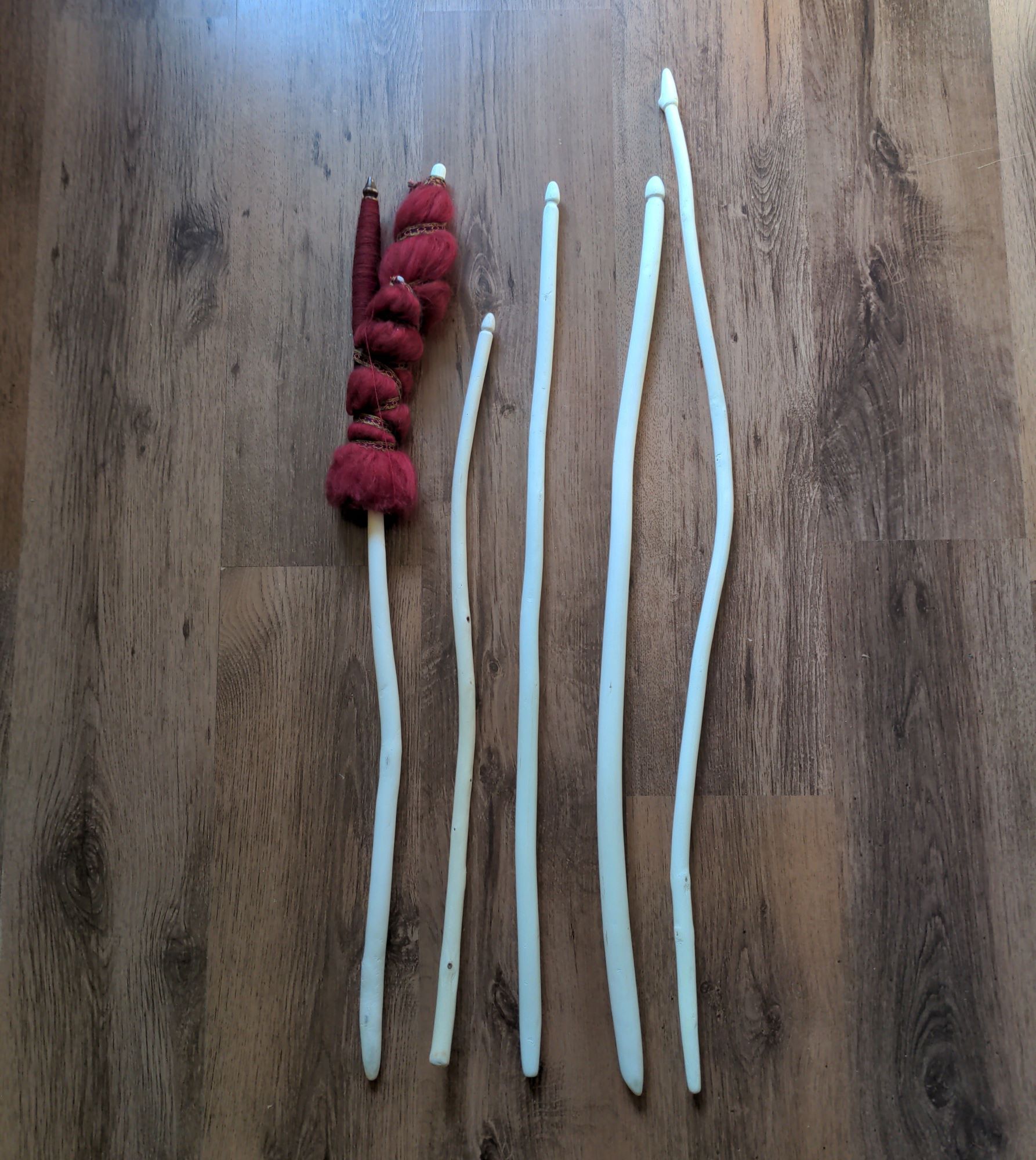Enkele weken geleden begon ik met een “middeleeuws spinavontuur“.
Inmiddels wil het spinnen met de Franse spintollen heel aardig.
Om middeleeuws spinnen goed te doen, dan is een spinrok – die stok waar je de ongesponnen wol op doet – vrijwel onmisbaar.
Al snel werd mij duidelijk dat een spinrok die in de hand gehouden word, met deze stijl van spinnen, maar niet leuk wou gaan.
Een langere spinrok die je door een riem steekt, daarentegen, werd waarschijnlijk meer gedaan.
Echter had ik nog geen spinrok van die lengte. Eentje (uiteindelijk 2) zelf maken van een oude schoffel steel, zag ik wel zitten.
Zo gezegd, zo gedaan, maar het bleek al snel dat deze te dik en zwaar is om voor langere tijd fijn mee te werken, maar het was wel duidelijk geworden dat deze lengte van spinrok mij goed bevalt.
Een tak kan ook prima en tijdens een wandeling zag ik een mooi afgezaagd exemplaar.
Simsalabim nou ben jij een spinrok! Hmmmm toch een beetje aan de korte kant…
Kort daarna kwam ik onderweg naar huis snoeiafval langs het fietspad tegen en laten daar nou een paar geschikte takken tussen zitten!
Die nam ik mee en na wat gemeet, gezaag, geschraap, geschuur en gesnij had ik er een paar prima spinrokken bij!
Tot slot besloot ik dat die ‘lange kromme’ toch beter tot zijn recht zou komen, wanneer die in 2 kortere spinrokken omgetoverd zou worden.
En zo heb ik er inmiddels een handjevol spinrokken bij!
English
Making distaves
At the end of march I started a ‘medieval spinning adventure‘.
2 months later and it is going rather well, but it did take a lot of practice and tweaking/making tools to make it work for me.
One of the things you can hardly do without while doing medieval style spinning is a distaff, the stick where you put the unspun fibres on.
It felt like handheld distaves are not compatible with me and medieval style spinning, so I set my eyes on belted distaves.
These are longer distaves that you put under one arm, and the end is often stuck between you and a belt.
I had a worn out gardening tool that could work out, so with some tweaking I now had 2 belted distaves.
Although with trying them out, it became quickly apparent that they are too bulky and heavy to use for long spinning sessions.
A quick little bit of research proved that medieval distaves, the plain(er) ones at least, are often not much more than thumb thick.
A stick or branch can work really well for that, so later, when I took a walk and saw an appropriate cut off branch, I took it home and made it into a distaff.
This one, though much better, proved to be on the short side, so when I came across some more cut off branches a few days later, they transformed into distaves too. Most of these work realy well, but the long curvy one, eh, it now works better as 2 handheld distaves.
So now my collection of spinning tools has grown a bit again, and there’s more to come!

The 2 on the left are made from an old gardening tool, and the 2 on the right, are the handheld ones I made from the long curvy one.
